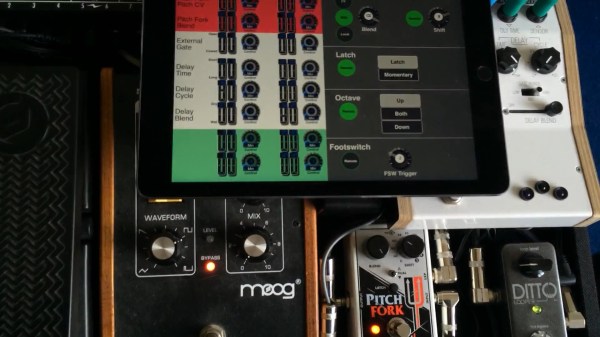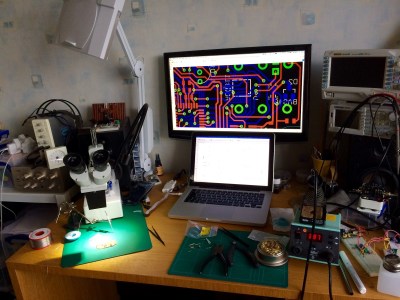[gutbag] is a guitarist. And guitarists are notorious knob-twiddlers: they love their effects pedals. But when your music involves changing settings more than a few times in the middle of a song, it can get distracting. If only there were little robot hands that could turn the knobs (metaphorically, sorry) during the performance…
Tearing into his EHX Pitch Fork pedal, [gutbag] discovered that all of the external knob controls were being read by ADCs on the chip that did all of the processing. He replaced all of the controls with a DAC and some analog switches, coded up some MIDI logic in an ATmega328, and built himself a custom MIDI-controlled guitar pedal. Pretty slick, and he can now control it live with his iPad, or sequence the knobs with the rest of their MIDI system.
This wasn’t [gutbag]’s first foray into pedal automation, however. He’d previously automated a slew of his pedals that were already built to take control-voltage signals. What we like about this hack is the direct substitution of DAC for potentiometers. It’s just hackier. (Oh, and we’re envious of [gutbag]’s lab setup.)
This isn’t the first time we’ve covered [gutbag]’s band, Zaardvark, either. Way back in 2013, we featured an organ-pedal-to-MIDI hack of theirs. Keep on rockin’.













